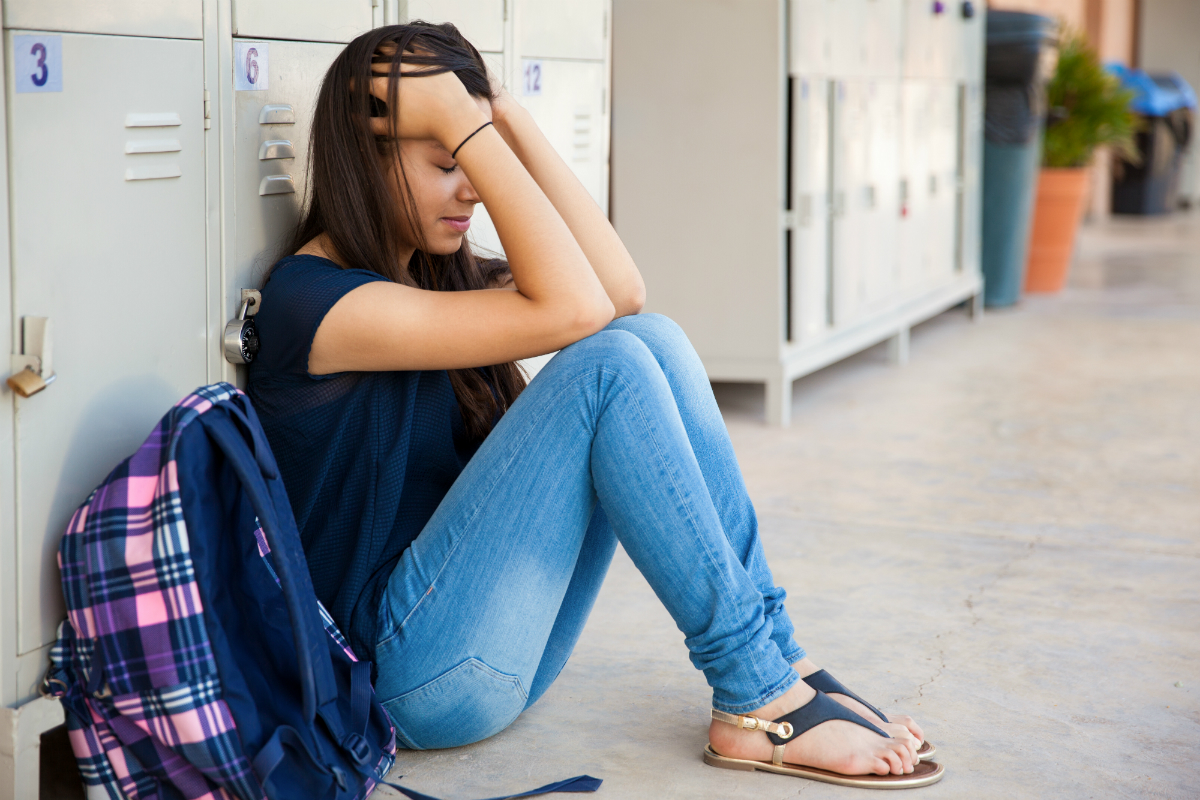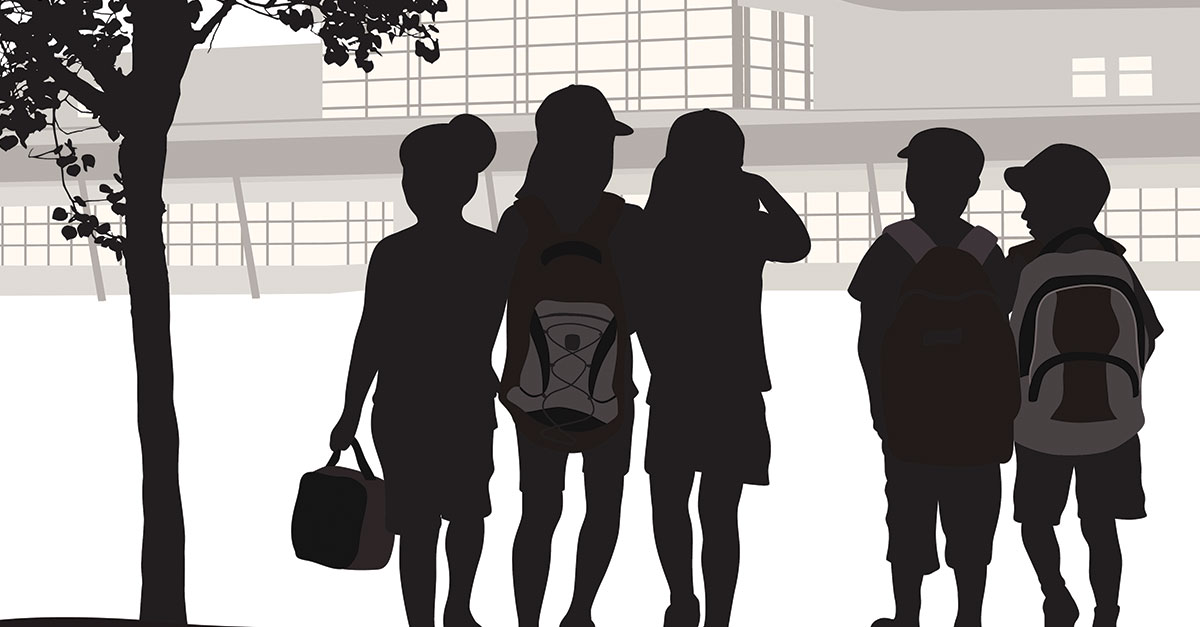Recent federal data show that while suicide remains one of the leading causes of death for young people between the ages of 10 and 24, some numbers are trending in a positive direction for the first time, according to experts who presented the latest findings during a Sept. 18 webinar hosted by the National Center on Safe Supportive Learning Environments (NCSSLE).
Glenna Wright-Gallo, assistant secretary in the Office of Special Education and Rehabilitative Services at the U.S. Department of Education, noted that the 2024 National Strategy for Suicide Prevention and its accompanying Federal Action Plan released this past spring includes recommendations to meet the needs of at-risk populations and identifies 200 actions to address young people’s mental health needs.
Because schools reach 95 percent of all youth across the country, the importance of school-based strategies to improve mental health and well-being for all students cannot be understated, Wright-Gallo said.
Experts from the Centers for Disease Control and Prevention (CDC), the Substance Abuse and Mental Health Services Administration (SAMHSA) and more discussed trends related to suicidal thoughts, attempts and mortality among students as well as risk and protective factors for suicide prevention, and strategies schools might implement to enhance those protective factors.
What the numbers show
Katherine Deal, a SAMHSA public health advisor, said many risk factors occur outside school buildings, but many also happen in the classroom. Adverse childhood experiences (ACEs) including maltreatment or sexual assault and abuse, social isolation, living in a community with a high rate of violence, experiencing bullying, racism or discrimination, being involved in the juvenile justice or foster care systems or experiencing homelessness can all increase suicide risk among young people.
That is perhaps why youth involved in the juvenile justice system die by suicide about two to three times more often than youth in the general population, she said. Youth living in rural areas have a suicide rate about 54 percent higher than their non-rural counterparts. (Links to all of the resources, trainings and surveys referenced during the webinar, as well as a recording of the webinar, are available here.)
Fatalities are only one part of the picture, explained Marci Hertz, senior advisor for School Mental Health within the CDC’s Division of Adolescent and School Health.
“For every one youth who dies, there are 16 young people who are hospitalized, and 27 young people who are treated and released from emergency departments, and it’s unclear what happens to those young people,” Hertz said.
In addition to justice-impacted and rural youth, American Indian and Alaska Native young people, LGBTQ youth and other student groups continue to be disproportionately affected, but even that only tells part of the story: male adolescents are more likely to die by suicide, but female adolescents are more likely to have suicide-related behaviors, including suicide ideation and making suicide attempts, she continued.
“While we haven’t officially released the 2023 data, the early provisional data that we have now shows an increase of 3 percent overall for children and adults from the data from 2021, making it the highest ever recorded rate of suicide overall for our population,” Hertz said. “The encouraging news for those of us working with young people is that these increases were not driven by youth, and in fact, we were encouraged to see at least an 18 percent decline in 2022 among youth ages 10 to 13, and a 9 percent decline in those ages 15 to 24.”
The decline reflects a similar reduction in rates of reported sadness and hopelessness felt among young people. In 2019, prior to the pandemic, the reported rate of persistent sadness or hopelessness increased from 31 percent to 37 percent.
“Youth mental health was already deteriorating prior to the COVID-19 crisis, and unfortunately, it was further exacerbated by it, which we saw in 2021,” Hertz said. “This is why in particular we were really heartened to see, from 2021 to 2023, a small but significant decrease in the percentage of youth who said they were feeling persistently sad or hopeless so frequently over a two-week period that they stopped engaging in regular activities. It’s still far too high, we still have 40 percent who are saying they felt persistently sad or hopeless, but this is also why we were encouraged to see it moving in a more positive direction. This is actually the first time since 2009 that we saw this indicator moving in a positive direction.”
Dips were especially prominent among female students (57 percent in 2021 to 53 percent in 2023) and Hispanic youth (46 percent to 42 percent).
Increasing protective factors, such as having social support and close relationships with peers and teachers and school staff and having positive connection with schools and community institutions, can help continue these positive trends, Deal noted.
What LEAs can do
The 2024 National Strategy for Suicide Prevention includes four strategic directions — some of which could be applied in school settings.
Integrating suicide prevention into the culture of local schools and implementing comprehensive prevention strategies for students and staff who are disproportionately impacted by suicide are among the strategies Deal noted could bolster protective factors. Including speakers who have lost a loved one to suicide, those who have made a suicide attempt or have suicidal thoughts or someone who has helped another person through a crisis can make a positive impact on young people as well, she said.
“No one program, no one intervention is likely to prevent all suicides. This is a really complex issue that requires a multifaceted approach,” Deal said.
Some of the evidence-based strategies discussed during the webinar included:
- Increasing the sense of school connectedness among young people by promoting social networks and connections between youth and trusted adults on campus and helping to build positive attachments between families and schools.
- Creating positive and safe school environments by implementing programs that are focused on preventing bullying and violence, as well as substance use and misuse among students.
- Teaching coping and problem-solving skills through social-emotional learning to help strengthen resilience among young people.
- Identifying students who are at risk of suicide and connecting them to culturally responsive and trauma-informed behavioral health services.
- Providing trainings for teachers and other school staff on how to identify students that may be struggling.
Regardless of what tactics local educational agencies take to address the challenge, strategic planning is crucial to “ensuring that you are using your resources wisely and you are able to prioritize your efforts and be more successful with your prevention efforts,” Deal concluded.





